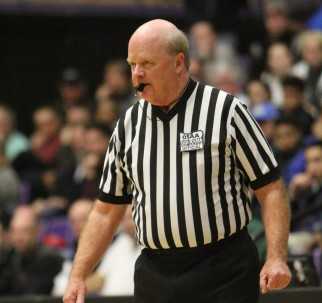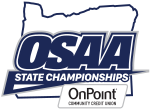
As difficult as this year was for high school athletes and coaches, it might have been more challenging for shorthanded sports officials associations.
“There was all kinds of stuff going on, but we managed to get through the season,” said Jack Folliard, executive director of the Oregon Athletic Officials Association. “There's no playbook on how to handle a pandemic. Nobody knew what to do, really. Not all games were covered. But it's behind us.”
The timing of the crisis couldn't have been worse for Oregon officials associations, who already were dealing with a steady decline in members for the past decade.
The number of officials registered in Oregon was 2,552 in 2020-21, a 26.4 percent decline from the previous year. It represents a 42.1 percent drop from 2010-11, when the state had 4,412 officials.
Many officials didn't register due to health concerns. Some didn't come back due to scheduling conflicts created by the crisis. Some multi-sport officials decided to focus on one sport, in part due to seasonal overlaps.
Associations now must try to repair the damage.
“The commissioners are going to try to contact all the people that didn't work last year and try to talk them into working the upcoming seasons,” Folliard said.
If past experience is any indicator, commissioners have their work cut out for them.
“What happens to an official, if you're thinking about retiring, and you stop working for a year, it's really hard to decide to come back,” Folliard said. “Your lifestyle changes, that type of thing. Sometimes when people stay out for a year because they're hurt, and they've been working for 20-some years, they say, 'Hey, it's time to hang it up.'”
The Portland Basketball Officials Association lost one-third of its membership from 2019-20, down to 206 from 311. Of the 105 that did not return, 55 gave reasons related to COVID-19, according to PBOA commissioner Steve Scott.
“I expect to see 75 percent of those people back,” Scott said. “Traditionally when somebody sits out for a year, for whatever reason, we get about 40 percent of those people back. But I expect to see a higher percentage come back this year.”
Scott said this season was the most challenging of his eight years as commissioner because of the combination of being shorthanded and having a condensed schedule.
“There were a ton of games every week,” Scott said. “Every day was like a Tuesday or Friday in basketball. It was just tough. I had people working five or six days a week. It was really hard on them. I marveled at how people stepped up. It was an extremely tough year.”
In some cases, schools were forced to cancel contests due to lack of officials, primarily on the subvarsity level. In many other cases, schools moved contests to dates that would accommodate officials.
Saturday varsity football games became much more common, especially in 6A. The Portland Interscholastic League played its schedule on Saturdays.
“I'd be surprised if that doesn't happen again,” Folliard said. “I anticipate that we're going to have a lot of scheduling issues like last season. Hopefully not as many, but we're going to have them.”
Associations are desperate to bolster their numbers but lack the budget for a “big-time marketing campaign,” according to Folliard. They have a handful of radio, newspaper and online ads, but rely mostly on word of mouth.
The increase in telecommuting – necessitated by the pandemic -- is a potential benefit to associations, who need officials to be available for late-afternoon contests.
“Schedules are more flexible. That might help a lot,” Folliard said. “To what degree, who knows?”
Basketball was particularly hard-hit by the crisis, going from 1,086 officials in 2019-20 to 632 this year, a 41.8 percent decline. Folliard said it was due to the season shifting from winter to late spring.
“A lot of our officials had other commitments in the spring,” he said.
Wrestling had the steepest drop in numbers, going from 161 to 89, down 44.7 percent. Volleyball also felt the pinch, losing 33.3 percent of its officials.
Schools increasing the financial incentive for officials could help alleviate the shortage, especially considering the rise in gas prices. To make an impact on numbers, though, “it would have to be a significant jump,” Folliard said.
The first step in associations regaining some footing is bringing back members who sat out this year.
“Our normal attrition is closer to 15 percent, with retirements and people moving away, job changes, etc,” Folliard said. “So we always have to replenish. But the pandemic cut us real bad.”
***
For information on becoming a sports official, visit oreofficials.org.
Photos of state championship events are available online from Northwest Sports Photography at 4nsp.com.









